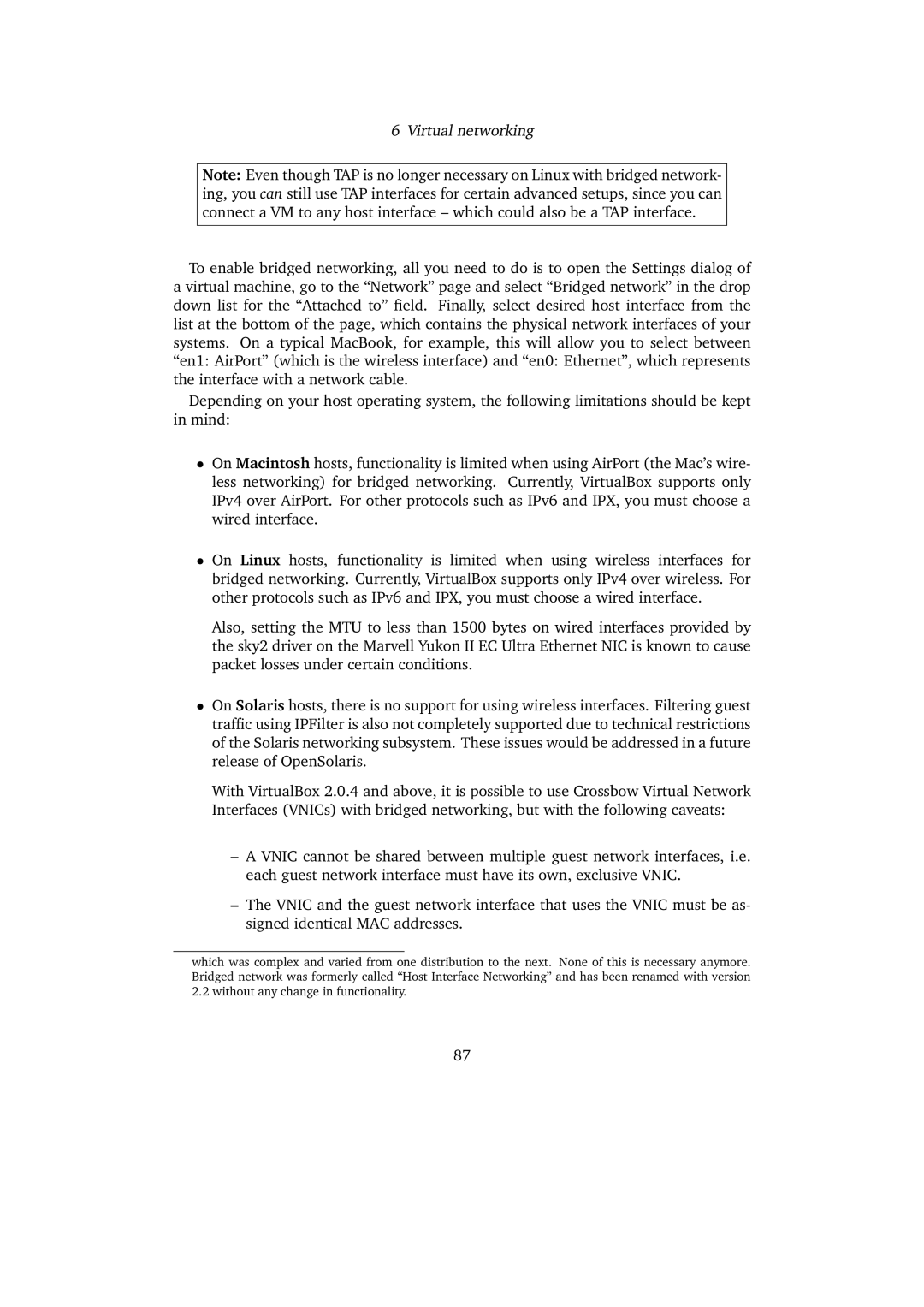
6 Virtual networking
Note: Even though TAP is no longer necessary on Linux with bridged network- ing, you can still use TAP interfaces for certain advanced setups, since you can connect a VM to any host interface – which could also be a TAP interface.
To enable bridged networking, all you need to do is to open the Settings dialog of a virtual machine, go to the “Network” page and select “Bridged network” in the drop down list for the “Attached to” field. Finally, select desired host interface from the list at the bottom of the page, which contains the physical network interfaces of your systems. On a typical MacBook, for example, this will allow you to select between “en1: AirPort” (which is the wireless interface) and “en0: Ethernet”, which represents the interface with a network cable.
Depending on your host operating system, the following limitations should be kept in mind:
•On Macintosh hosts, functionality is limited when using AirPort (the Mac’s wire- less networking) for bridged networking. Currently, VirtualBox supports only IPv4 over AirPort. For other protocols such as IPv6 and IPX, you must choose a wired interface.
•On Linux hosts, functionality is limited when using wireless interfaces for bridged networking. Currently, VirtualBox supports only IPv4 over wireless. For other protocols such as IPv6 and IPX, you must choose a wired interface.
Also, setting the MTU to less than 1500 bytes on wired interfaces provided by the sky2 driver on the Marvell Yukon II EC Ultra Ethernet NIC is known to cause packet losses under certain conditions.
•On Solaris hosts, there is no support for using wireless interfaces. Filtering guest traffic using IPFilter is also not completely supported due to technical restrictions of the Solaris networking subsystem. These issues would be addressed in a future release of OpenSolaris.
With VirtualBox 2.0.4 and above, it is possible to use Crossbow Virtual Network Interfaces (VNICs) with bridged networking, but with the following caveats:
–A VNIC cannot be shared between multiple guest network interfaces, i.e. each guest network interface must have its own, exclusive VNIC.
–The VNIC and the guest network interface that uses the VNIC must be as- signed identical MAC addresses.
which was complex and varied from one distribution to the next. None of this is necessary anymore. Bridged network was formerly called “Host Interface Networking” and has been renamed with version 2.2 without any change in functionality.
87
